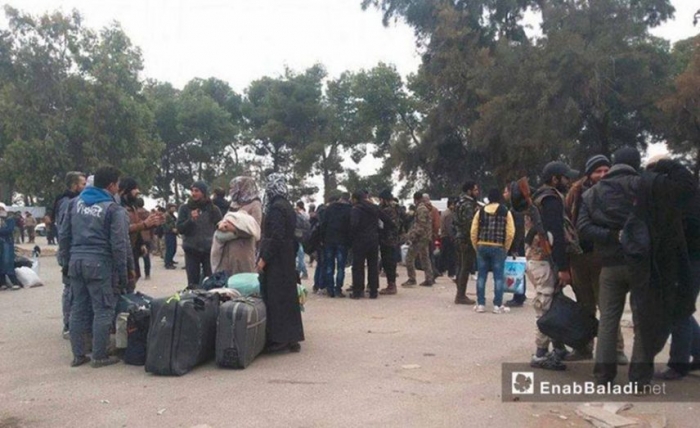“At the beginning of 2017 Damascus and its countryside will be free of weapons and gunmen.” Analysts, supporters of the Syrian regime and the media have circulated this belief a great deal over the last few weeks, especially after a wave of reconciliations with rebel groups in Damascus and its countryside has returned to the forefront.
The deals have returned most of the cities into the “nation’s embrace,” free of “weapons and gunmen,” as the regime and its supporters say, after the departure of the rebel groups following an ultimatum between “total war” or surrendering their weapon and either normalizing their status or heading to Idleb in northern Syria.
The most recent reconciliation was in the city of Al-Tal in the Damascus countryside on Dec. 2, and resulted in the departure of 2,000 fighters with their families to Idleb in northern Syria, transported in 45 buses.
The deal was reached last week after bombardment with barrel bombs and attempts by Assad’s forces to storm the city, where about 700,000 people live, including original residents and displaced people from neighboring towns, which pushed the fighters to submit to accepting the reconciliation.
The fate of most of the young men (those of military service age) who refused to depart to Idleb is unknown. They had two choices: Either leave the country after a deadline of six months set by the regime to settle their status, or join the official ranks and fight on the fronts, or join one of the military formations such as the National Defense Forces or the Qalamoun Shield, which is formed of regime militias from the cities and towns of Qalamoun.
Before Al-Tal, the regime and rebel groups made deals in the towns of Khan al-Sheikh and Zakaya in the Western Ghouta of Damascus, with at least 4,000 people leaving with their families in two batches. The latest was Thursday, Dec. 1, which consisted of 65 buses, each one including 35 people, after a wait lasting 25 hours, according to sources inside the town.
In the Eastern Ghouta, which was a major center for opposition forces in the Damascus countryside, the leaders of the Damascus countryside branches of the ruling Baath party issued a decision on Nov. 27 to name 30 party members in the Eastern Ghouta to communicate with residents of the area with the aim of ridding it of rebel groups.
Enab Baladi obtained a copy of the decision, composed of four pages, which said, “Residents of the Eastern Ghouta present in the city of Damascus have launched an initiative under the title of ‘Forgiveness’ with the aim of bringing the Eastern Ghouta into the quiet area free of weapons, achieving the best life for its residents.”
The initiative includes, according to the decision, the cities and towns of Kafrbatna, Arabin, Beit Sawa, Jisrein, Hamouria, Saqba, Hizza, Zamalka, Hatitat al-Turkman, Shaaba, Zebdein and Deir al-Asafir, while the decision did not mention appointing a council for Douma, or for any of its residents to reach the desired “reconciliation.”
Based on that, the following will be implemented: “The departure of all foreign militants, whatever their affiliation to the towns of the Eastern Ghouta, with their personal weapons, under the supervision of the council in these towns,” in addition to, “normalizing the status of all wanted people and militants with their weapons, and a settlement to lay down arms as was completed in Qadisiya and Al-Hamah. Those who do not agree to the settlement will depart for Idleb.”
It will also “give all those who have fled from the army a delay [deadline] of six months to normalize their status,” and “open all roads and permit the entry of all goods and aid of various types.”
The council vowed to “permit all displaced people to return to their towns and villages immediately, open the roads, and all residents will [be allowed to] remain within their homes in every town, with participation from all to defend their towns, while everyone will be equal in terms of rights and duties.”
This article was translated and edited by The Syrian Observer. Responsibility for the information and views set out in this article lies entirely with the author.


